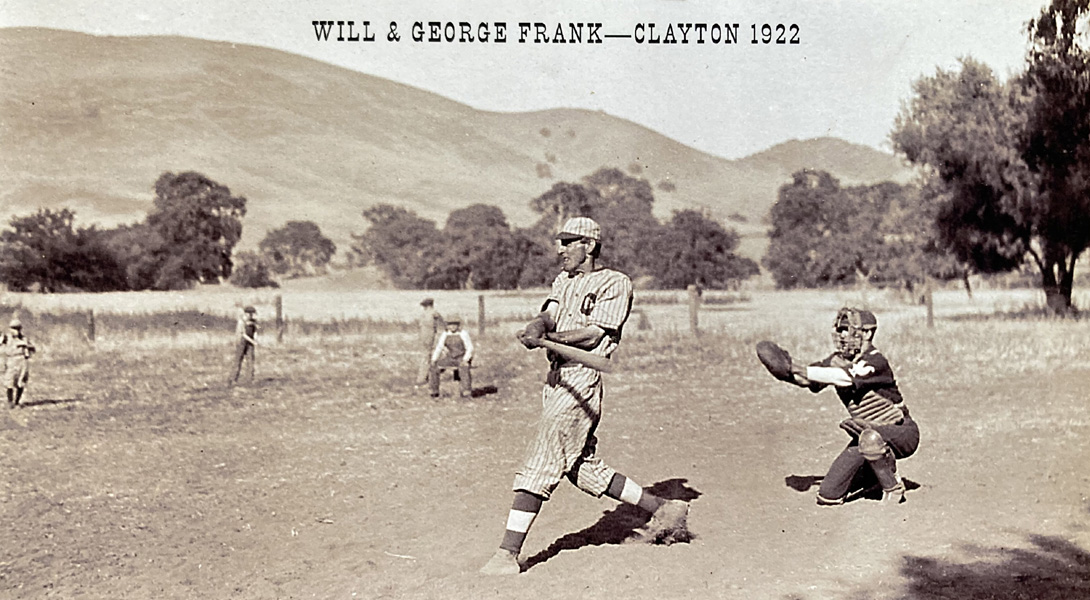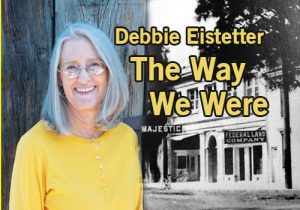The hits and misses of yesteryear’s baseball practices in Clayton

 CLAYTON, CA (Sept. 9, 2024) — Baseball in the early 19th century was a wild affair. It had become a singular American entity having some similarities to the games of cricket and rounders, but included some peculiarities to make the game proceed at a faster pace and be more aggressive overall.
CLAYTON, CA (Sept. 9, 2024) — Baseball in the early 19th century was a wild affair. It had become a singular American entity having some similarities to the games of cricket and rounders, but included some peculiarities to make the game proceed at a faster pace and be more aggressive overall.
The baseball itself was small; six inches compared to the current standard of nine inches, and many times was homemade by the pitchers themselves. Cork was a popular material for the core, as it is today, but the eye of a sturgeon fish could serve as a substitute in a pinch.
Rubber from old shoes was used to wrap around the core, then wound with wool yarn and covered with any type of leather. The construction of each baseball was unique, but all were similar in the fact that none of them lasted longer than one game.
Batters made their own bats from wood; ash being a favorite, but any wood around would serve. Shapes were round or flat, and length and weight were whatever a batter felt would improve his play.
The ball field was just that, a field; a flat open space with no particular dimension. Play was barehanded, pitching was underhanded and the batter could stand at the plate for as long as it took to hit the ball.
Throwing an opponent “out” required a player to actually throw the ball and hit the runner’s body using a method known as “soaking” or “plugging.” In 1845, the Knickerbocker Base Ball Club in New York City came up with the first set of written rules, including the diamond-shape infield, the three-strike rule and replacing soaking and plugging with the “tag.”
Men from different parts of the country came in contact when enlisted to fight in the Civil War, and baseball was a favorite pastime of the troops. Once the men returned home, it quickly became a national pastime and the game earned more credibility when some churches endorsed Sunday ball games as acceptable alternatives to Sundays spent in saloons.
In the 1870s, baseball began to look more like our modern version: separate amateur and professional leagues were established, bats and balls were standardized and gloves were no longer thought to be “unmanly.”
The Haymakers and the Clayton Nine
Clayton had an amateur team at this time called the “Haymakers” made up of young men from local farm families. Away games were held at the fields of other Contra Costa teams and Clayton home games were hosted at the large vacant lot behind the buildings on north Main Street that in 1912 would boast a grandstand.
By 1892, the team was referred to as the Clayton Nine in local newspapers and praised for being a competitive team known for their sportsmanship and generous hospitality to visiting teams. Sometimes they were taunted by nasty opponents as “hayseeds, pumpkins and woodchoppers.”
These labels were applied liberally by an opposing team, the Coles, in April of 1892 at a game in Martinez when Clayton was coming back from a 19 to 3 deficit in the fifth inning. The Coles and an “outside element” in the crowd began to “vent their spleen” on the team and the umpire when “they began to realize that the ‘pumpkins’ were hot stuff,” wrote a reporter from the Antioch Ledger.
The Martinez crowd registered “disgust and disapproval” at the conduct of the Coles when that team kept insisting on changing umpires to their own advantage. By the end of the game, four umpires came and left, but Clayton won by three runs.
Amateur baseball may have experienced elements of standardization throughout its early years, but its controversy and excitement has always kept the game fresh.
For more information or to become a member, visit claytonhistory.org. The Clayton Museum is open 2-4 p.m. Wednesdays and Sundays at 6101 Main St.. Admission is free.

Debbie Eistetter
Debbie Eistetter has been a resident of Clayton for almost 30 years. She serves on the Board of the Clayton Historical Society and believes that history shows us the way to a more enlightened present and hopeful future. For more information about the CHS Museum please visit claytonhistory.org
